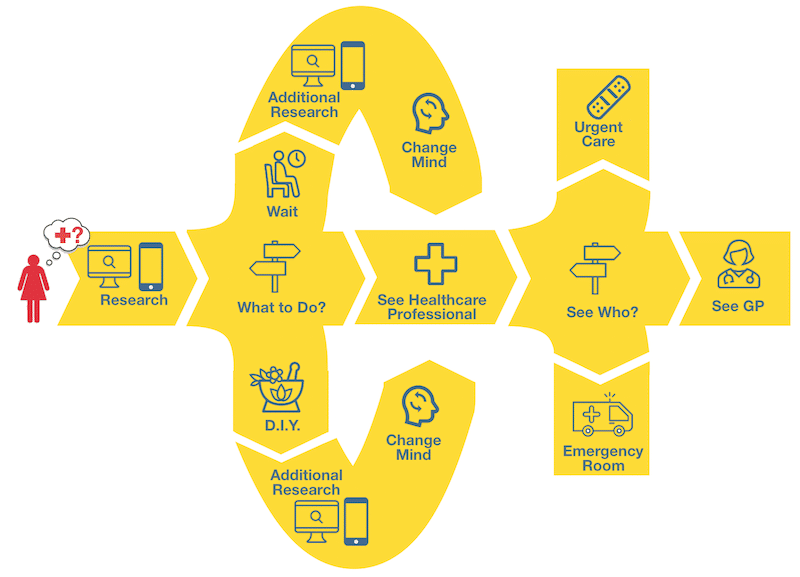What is Rural Patient Outmigration?
1 in 5 Americans live in rural areas.
Outmigration is when these residents of rural areas decide to get healthcare not from their local providers, but instead by traveling to larger hospitals in more populated areas.
There are many reasons why outmigration happens. A few of the obvious reasons include:
- The service the patient needs is not available locally.
- The patient doesn’t know the service is available locally.
- The patient wants the prestige associated with a larger hospital.
- The patient assumes specialists in larger institutions are better than those in the local hospital.
- The patient’s family lives in a more urban area and together they decide to have procedures done at the larger hospital.
The decline of rural healthcare in the US
Patient outmigration plays a part in an ominous trend—the decline of rural healthcare in the US. The data is clear: rural healthcare systems have many challenges, and the hospitals themselves are very often sick, and getting sicker. There have been 120 rural hospital closures in the past 10 years, and many experts are predicting more and more closures to come.
The hollowing out of rural health care impacts not only the rural residents’ personal health, but it also impacts the entire community: quality health care is a factor in keeping residents and a hurdle for people considering moving to a rural area. More people leaving and fewer moving in results in a downward spiral of entire communities.
How Can Digital Marketing Help Reduce Patient Outmigration?
There are many strategies for strengthening rural healthcare systems—telemedicine and other technological advances, improving efficiencies, adjusting services provided, creative staffing, securing additional revenue streams, or shoring up community support—but our experience has shown that digital marketing can play a significant role in slowing the downward trend for some rural healthcare facilities.
Healthcare digital marketing can help keep local hospitals top-of-mind for rural patients, informing them that the services or procedures they need can be found locally.
Patients usually go through a complex path before seeing a healthcare professional (HCP).

patient once they need healthcare services.
Digital marketing’s strength is that it can be used to place the rural hospital’s message in front of the potential patient at exactly the right moment in their journey to find an HCP. That includes providing messaging and ads before, during, and after the prospective patient’s need for healthcare services.
Before the Healthcare Need – Branding & Awareness
One of the many challenges for a rural healthcare institution is making sure everyone in the community knows they exist, creating a good impression, and making known which services they provide. It’s important that this happens before the need for healthcare, so when a patient’s need arises, the institution and its services are top-of-mind.
Targeting your audience is easier than ever on digital platforms
Traditional marketing serves a purpose, yes, but its limitations with regard to audience targeting mean that a portion of your budget will inevitably be spent on people located in the competing urban area. By advertising on YouTube instead, you can target prospective patients not only by your local zip code, but by age, gender, and even specific interests.
PPC, SEO, Social media and other digital marketing channels not only make it possible to get the branding message to the right people in an affordable manner, but they’re also completely measurable, letting rural hospitals with tighter budgets fully understand the impact of their marketing dollars.
During the Healthcare Need – Providing Local Answers
Everyone eventually needs healthcare. In today’s internet-based world, most people’s first response is to go to their phone or computer and begin looking for answers to their questions about their symptoms.
This increasingly includes typing their concerns into Google. Below are some trends in healthcare-related searches on Google.
| Keyword Phrase | 2018/2019 Year-over-Year Growth in Searches1 |
|---|---|
| How to prevent ______ | ⬆︎14% |
| Is it normal to _____? | ⬆︎5–25% |
| Signs of _____ | ⬆︎17% |
| Symptoms of _____ | ⬆︎5% |
| What does _____ feel like? | ⬆︎21% |
| What does _____ look like? | ⬆︎21% |
Or maybe the patient just needs contact information help, like a phone number or an address. Here are some search trends on Google:
| Keyword Phrase | 2018/2019 Year-over-Year Growth in Searches1 |
|---|---|
| Emergency room | ⬆︎12% |
| Urgent care | ⬆︎34% |
| Virtual care | ⬆︎20% |
Digital marketing is how you make sure these prospective patients know that the answers they are searching for can be found in their community.
With an optimized website that represents your doctors and service lines well, a solid PPC strategy, and several other digital marketing tools at work, even the smallest of local hospitals can make sure that they’re the first option for the people in their own community.
After the Healthcare Need – Keeping Patients Coming Back
Patient retention is, of course, one of the keys to keeping rural hospitals healthy. There are many, many factors in increasing patient retention. But in broad strokes, they can be boiled down to customer service and perceived quality of care.
Digital marketing can, and should, play a role in patient retention:
- Use marketing automations to keep in touch with your patients after a visit, and to encourage them to share their good experiences.
- Use PPC and email marketing to spread your institution’s latest updates on new doctors, new services, and improvements in facilities.
The Power of Digital Marketing for Rural Hospitals
Digital marketing allows rural hospitals to focus on prospective patients before, during, and after their need for health services through laser-sharp targeting. Each type of digital marketing has its own way of finding people who are prospective patients, and we’ll explore each of those in this ongoing series. Some overarching advantages include:
- Geography – Ads can be run so they are only seen by people physically located in the hospital’s service area.
- Demographics – Want to run a mammogram campaign in October? Make sure that only women over 25 years of age see the ads.
- Interests – Most platforms (Google, Facebook, and other social media platforms) allow you to target people based on their interests.
- Keywords – Many of the most common digital-marketing tools work by focusing on what people are searching for on Google or Bing. When someone is searching for hip replacement, you can make sure they know that a doctor at the local hospital can do the surgery, and that a physical therapist in town can help in their full recovery.
- Visual – Beyond allowing you to put words in front of people, digital marketing can communicate powerful messages using images and video. Online video advertising can be done for a fraction of the cost of television commercials.
- Measureable – When set up correctly, every dollar spent on digital marketing can be measured. Rural hospitals will know how many appointments were made based on your online actions. This is something a billboard or radio ad cannot do for a hospital.
Leveling the playing field between rural and urban healthcare
Digital marketing by itself is not going to turn around a rural hospital. But it’s a very powerful tool that can help level the playing field between rural and urban healthcare institutions. The ability to target and inform prospective patients before, during, and after their need for health care is one that should not be ignored.
Sign up for our email newsletter below to make sure you don’t miss the rest of our blog series on rural healthcare digital marketing in which we will delve deeper into specific digital marketing channels, like Organic SEO, Local SEO, PPC, YouTube, Social Media, and Email Marketing.
1Data provided by Google



